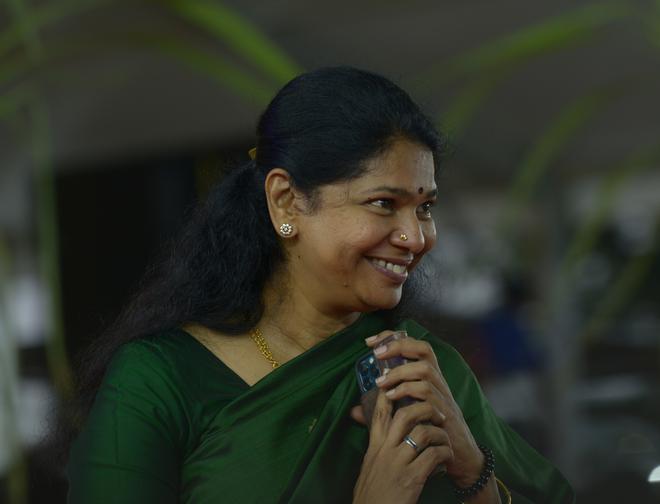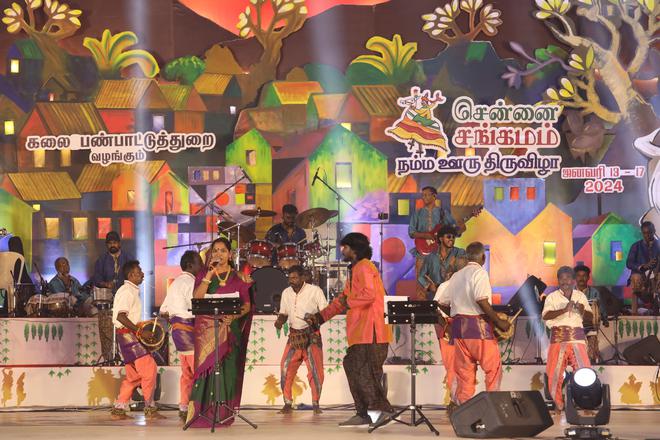December is the month of festivals, and music fills the air in Chennai, the actual and cultural capital of Tamil Nadu. The December music season during the Tamil month of Margazhi, is one of the largest music events in the world, as thousands of concerts are performed in the span of a month, and visitors arrive from all parts of the world to enjoy the culture in the rare, salubrious weather the month offers.
The December season and the musical tradition have become such a global phenomenon over the years that UNESCO has recognised Chennai in its Creative Cities Network, for its rich musical tradition. The season, however, largely, remains within the confines of, and is dominated by classical music and dance. In 2007, this changed.
That year, the city, used to the classical notes of the Carnatic trinity and the hymns of Andal, Manickavasakar and other composers, was suddenly exposed to the beats and rhythms of of parai, naiyandi melam, kaniyaan koothu and innumerable folk instruments and the singing of folk artistes at various public spaces, easily accessible by all. Music and culture was at the doorsteps of the people and on the streets and parks, no longer confined to air-conditioned auditoria. This season marked the arrival of Chennai Sangamam, a folk festival organised by the then DMK government.
Despite the clear divide between “classical” and “folk” which is also drawn on the lines of caste and location (urban versus rural), the Chennai Sangamam created a platform for the coming together of classical and folk art performers, and offered a continuity to Chennai’s musical tradition beyond the month of Margazhi. Everything, however, came to an abrupt halt after the change of regime in 2011. The DMK’s return to power in 2021, after a gap of 10 years, saw the resumption of Chennai Sangamam, which gave Chennai’s parks and public avenues rustic charm and music, for four days.
“We launched the Sangamam in 2007 to sustain folk arts that were languishing for want of support. It continued for four years and gave the much needed publicity, recognition and support to folk artistes. Artistes who participated in Chennai Sangamam could enter the film world, toured foreign countries and also found the next generation keen on learning these arts,” said DMK MP Kanimozhi Karunanidhi, who was instrumental in initiating the idea of and organising the festival.
The inauguration of the Chennai Sangamam always featured special themes that provided space for the meeting of classical and folk art forms. So impressed was then Chief Minister M. Karunanidhi with the arrangements that he expressed his appreciation openly.

Though resumed in a modest manner in 2021, the event gained momentum this year, as more artistes expressed their desire to participate in the festival. “Santhosh Narayanan scored the music for the inaugural show last year. Paul Jacob came forward to do it this year, because it was he who scored the music for the first edition of Chennai Sangamam,” Ms Kanimozhi said.
Unlike in the past which saw the involvement of various organisations working with the government in organising the event, the task now has been left to the Department of Art and Culture. Ms Kanimozhi said this would ensure the continuation of the festival in the future.
This year witnessed a substantial increase in the number of artistes who participated in the festival. “As many as 1,200 artistes participated in the four-day festival conducted in 18 venues. Every venue featured 6 events and one team of folk artistes performed in two places in a day” said B. Hemanathan, Deputy Director of the department.
He said Chennai Sangamam filled the gap in the month of Thai, when there normally would not be many opportunities for folk artistes to perform. It also created a feel of Pongal for Chennaities, and those who could not go to their villages to celebrate the festival. Besides offering a platform to folk artistes and an opportunity for city residents to watch folk performances, Chennai Sangamam also provided much-needed financial support to folk artistes.
Transformation in worship
Notably, the worship of folk deities has undergone a complete transformation over the past four decades. Folk deities across the State have gained an exalted status since the mid 1980s, and festivals are organised throughout the year, thanks to the economic empowerment of various communities.
As the Vedic way came to gain prominence in the State, historians say, folk deities and their worship changed significantly. In the past, the large idols would stand on a platform without a roof over their heads. Even if there was a temple, it resembled a small house. This changed -- over time, some of the idols, made of a lime and sand paste were demolished, and replaced with granite structures. Temples were constructed, as per Agama principles, with a sanctum and a gopuram. Almost all these temples have a statue of Vinayaga and other Vedic deities. Festivals are regularly organised, funded by local communities. But there were few or no concert opportunities between December and the first week of January.

The other big contribution of Chennai Sangamam was a qualitative difference in the lives of the artistes. “There used to be no Kodai (festival at the temple of folk deities) in the southern districts. Chennai Sangamam proved to be the saving of us. It gave each artiste ₹5,000 per day, and almost all artistes received ₹20,000 over four days. It is really good money,” said Naiyandi melam player Panakudi M. Siva.
His views are echoed by V. Muthuperumal, a kaniyaan koothu artiste, who has been performing at the Chennai Sangamam since its inception in 2007, and has participated in the inaugural events. “Chennai Sangamam compensated for the lack of concerts in the month of Margazhi,” he said.
The money is credited directly to the account of every artiste and the arrangement completely eliminates the role of middlemen. “We were treated well. We got food, accommodation and transportation to the venue. Officials also reimbursed the money we spent to come to Chennai,” Mr Siva said. All the male artistes were given two pairs of shirts and dhoties and the women, sarees. Ms Kanimozhi also presented them with sweets and gifts.
Tribal artists this year
Apart from the participation of folk artistes, this year’s event also showcased performances of Kani tribes and artistes from States such as Rajasthan, West Bengal, Odisha and Maharashtra.
“We aimed at creating a direct interaction between performing arts, artistes and audience and a space for folk art forms in urban centres,” explained Fr. Jegath Gaspar Raj, who played an important role in organising the festival between 2007 and 2011.
The response from the audience in many venues bore testimony to the success in achieving the interaction between the artistes and the audience. At the Nageswara Rao park in Chennai, the troupe led by Kantharvakottai A. Murugaiah quickly established a rapport with the audience, so much so that the audience sough more of the performance. However, they had to wind up as the next troupe was waiting to perform.
Mr. Murugaiah also said that Chennai Sangamam gave artistes like him the much-needed financial support in the month of Thai when there would not be many opportunities. “The response and encouragement from the audience is tremendous. People moved towards the dais to shake hands with us, to express their appreciation. This happened at almost all venues,” he said.
Fr. Gaspar Raj explained that Chennai Sangaman also achieved “inclusiveness” as it drew an audience from all communities. Importantly, it identified some of these talents to showcase to the larger world. The festival shot several artists to fame too -- G. Anthonydasan, a folk singer himself claimed he was more popular than ever. “If you are calling me today it is because of Chennai Sangamam. I got an opportunity to perform at the Chennai Sangamam event with Chinnaponnu. I am now a busy artiste, travelling to many countries to perform. I am writing and singing songs and have rendered 500 film songs,” he said. Anthonydasan also rendered the song in Mari Selvaraj’s Pariyerum Perumal.

According to him, Chennai Sangamam offered a new lease of life to many folk arts and artistes. “We do not have concert opportunities throughout the year. In the southern districts the season is generally over with the end of Dussera. Artistes performing during funerals may get opportunities while others would sit twiddling their thumbs for three months of the year. The period may differ from region to region. Chennai Sangamam provided succour to artistes during this season,” said Mr. Anthonydasan. Chennai Sangamam placed him on the path of success and he is even running a recording company now, called Folk Marley, he added.
Ms. Chinnaponnu’s talent was also spotted by the film world during her performance at Chennai Sangamam. Subsequently, she rendered the song Naaka Mukka in the film ‘Kathalil Vizhunthen’ and worked for other films too.
S. Rani, a singer from the Irula community in Siruseri, on the outskirts of Chennai, was the cynosure of all eyes during the Pongal performances this year. “We perform in the streets and temples. It was my dream to perform at Chennai Sangamam and it became a reality this year. I do not have words to express my gratitude. They gave us clothes, money, food and accommodation. It is a great honour,” gushed Rani.






